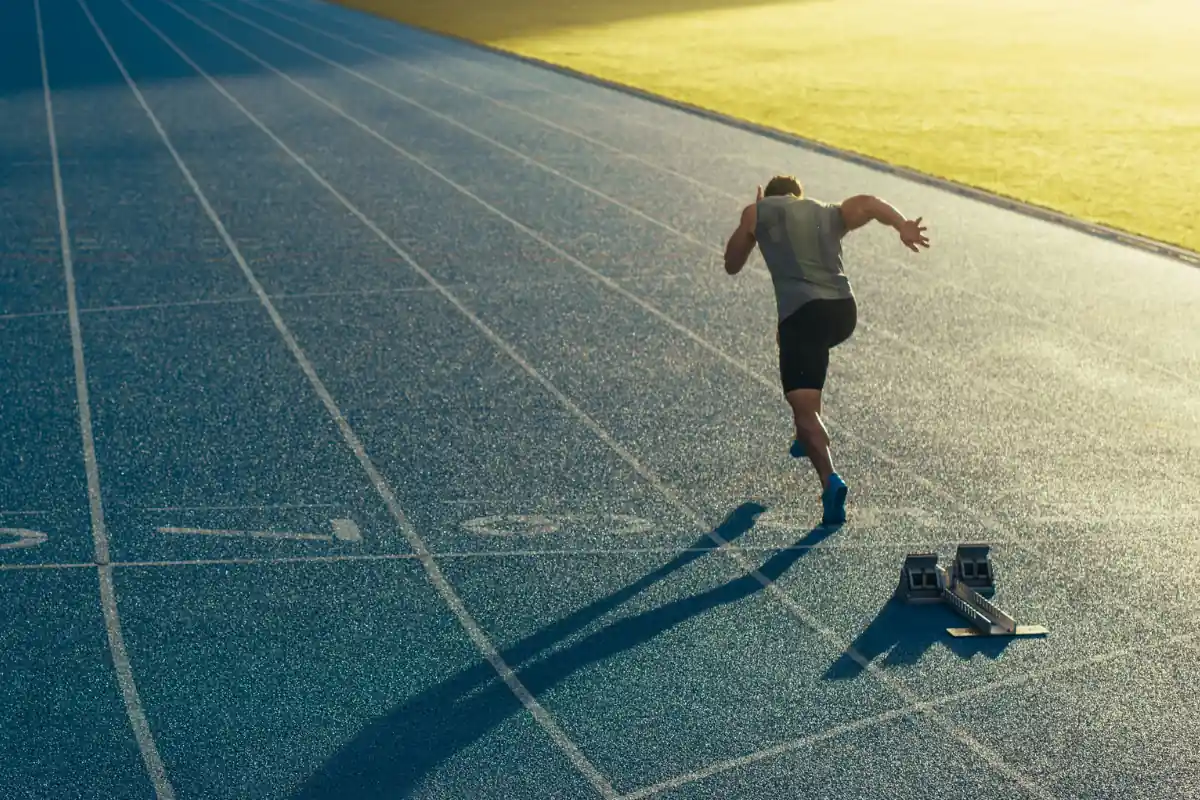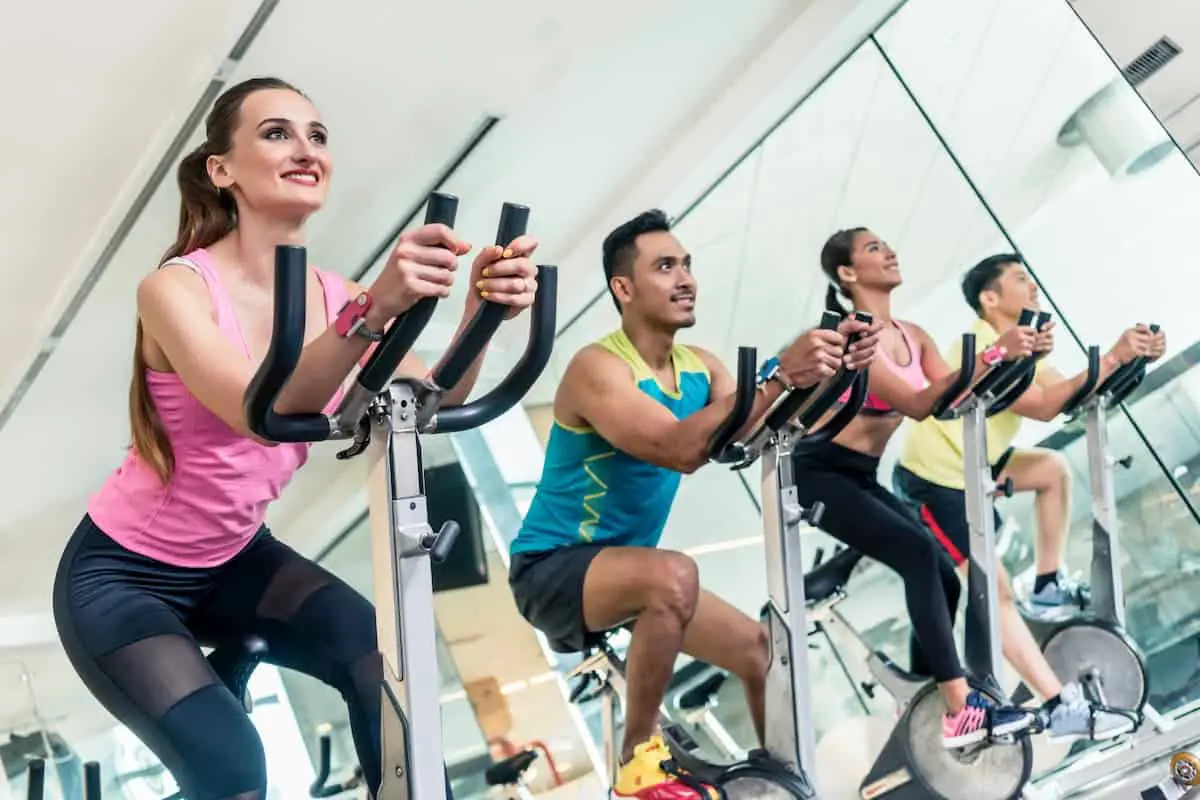If you’re a runner and are eagerly looking for ways to improve your swimming fitness, one question that may be running through your mind is whether or not running will actually help you swim better.
In the past, coaches discouraged runners from doing any other aerobic activity besides more running because they believed it would reduce their endurance levels and their cardiovascular fitness in long-distance events like the marathon, so does running help swimming fitness?
Running is a great form of cross-training for swimmers. In addition to giving your heart and lungs a workout, it also helps build muscular endurance, power, and strength in the limbs. It’ll improve core stability too. running has other well-known benefits on mental health including stress relief and mood-boosting!
Running can actually help swimmers become faster in the water by increasing their lung capacity and giving them a better understanding of how to use oxygen efficiently during exercise as well as increasing upper body strength.
How Much Should I Run as a Swimmer?
For someone just starting out as a runner who is also a swimmer, it might not be advisable to perform ground-based aerobic exercise more than twice a week if planning on doing swimming in addition.
However, as you become stronger and are able to handle the increased training demands that running requires, you can start doing three or four workouts per week with at least one day of rest in between each session.
This will help build up cardio endurance, boosting your heart rate while running while helping you to increase your upper body strength which will help you in your swim session.
Does Running Fitness Transfer to Swimming
Running fitness transfers well to swimming because both activities require good cardio endurance and the ability to breathe properly.
They also help improve upper body strength, which is beneficial in pulling yourself through the water during a swim workout when done regularly over time with proper training.
Major muscles used for both activities include the quadriceps, hamstrings, and gluteus maximus (butt) in your legs as well as your core muscles that keep you upright.
The main difference between running fitness and swimming fitness is that while runners rely more on their anaerobic system during a race to help them sprint faster, swimmers depend almost entirely on their aerobic system to help them swim faster over long distances.
In running, you sprint and then stop as opposed to swimming where you keep going for a much longer period of time which is why the aerobic system plays such an important role in allowing swimmers to be better at what they do.
Can Running Improve Your Swimming?
As to performance, running can definitely help improve your swimming.
A swimmer’s performance is determined by their aerobic fitness, which means that running can help improve this key aspect of competitive swimming.
Running also helps build upper body strength and increases heart and lung capacity to allow you to take in more oxygen during your swim workout or race allowing swimmers to become faster overall.
If you’re looking for a sport where both cardio endurance and upper body strength are needed, consider running and swimming!
Helps Build Stronger Muscles
Running can help swimmers build other muscle groups that come in handy during a swim workout or race.
While both activities require strong legs, running helps to build up the quadriceps and hamstrings more than swimming does- which are two very important muscle groups for swimmers.
Running also works out your gluteus maximus (butt), while swimming primarily focuses on building other muscles like your core and lower back which are needed for other sports as well.
Another great aspect of running is that it helps increase bone density- especially in those who are just starting to exercise or have not been active recently because more weight-bearing activity (i.e., when you’re standing up) puts more stress on the bones which makes them stronger in response.
This means swimmers can take advantage of running to help build stronger bones over time by taking part in this form of exercise- especially when combined with proper diet and weight training for the upper body as well.
In addition, runners often have better control over their breathing than swimmers do which will also come in handy during a swim workout or race.
Running fitness can help improve your speed and endurance in swimming over time as you become more conditioned to pushing yourself longer during workouts- which is a key aspect of the sport.
Can Help Prevent Injury
One thing that derails all athletes is injuries, running can help prevent injury by strengthening the key muscles that swimmers use during their sport.
This means you can decrease your risk of being sidelined due to a swimmer’s curse which will allow you to keep up with training better and ultimately perform at your best in competitions when it matters most.
Injuries are every athlete’s worst nightmare but running can help to condition and strengthen the muscles that swimmers need in order to prevent injury.
Running Approaches for Swimmers
There are numerous forms of exercise available but running is one of the best for a swimmer. This is due to the fact that running can help build stronger muscles, prevent injuries and improve cardiovascular fitness.
Swimmers are generally at a disadvantage when it comes to upper body strength due to the nature of their sport.
Running as an alternative to swimming will allow them to strengthen these muscles which will make swimming laps easier in many ways as well as give them an additional edge over other swimmers.
Intervals
One solid way for you to get higher levels of heart health is by doing interval training. This is where you run for a certain amount of time at one level and then increase your speed to another, higher level for a short period before returning back down again.
This allows swimmers to build their endurance in the same way that they would when swimming laps but can also help them get stronger as well due to the increased speed.
The best part of interval training is that it can be easily done at home due to the minimal equipment required which means you won’t have to spend an arm and a leg just in order to get into shape for competitive swimming.
Distance
This is more aligned with swimming as distance running is a highly endurance-based exercise.
In order to train for this, you will need to be able to run long-distance several times over which is why it’s best suited for swimmers who are looking to build their endurance and get stronger muscles in the process.
This could be seen as more parallel training as opposed to a focus on improving speed or strength levels right away but can also help with these aspects if done regularly.
Hill Training
Adding in elevation gain to your running workout can help increase strength and make it a bit more like interval training.
Hill training will force you to slow down in order to ascend the hill but once at the top, you’ll be able to resume your faster pace until reaching another incline later on which means that this is a good option for those who are looking to build strength as well.
You don’t have to do this in order to build strength but it’s a nice option for those who are looking for something different from swimming and want their muscle development levels to continue increasing over the course of time without having to spend more money on workout equipment or gym memberships.
Jogging
Looking for a more casual workout and burn off some calories? Jogging is a good option for those who are looking to keep moving without having to put in too much effort.
The intensity level can easily be adjusted up or down which makes it easy for you to choose how hard you want your workout and calorie burn levels that day based on the duration of time that you’re planning on jogging.
As a down day from swimming, this is an excellent way to keep your muscles in tip-top shape without having to put them through a strenuous workout and injury risk.
This allows you to get the same calorie burn that distance running brings but at a much lower cost which can be beneficial for swimmers who are looking for ways to save money on their training needs.
Walking
Some days you may feel exhausted and walking is still a viable option for those who want to get out there and keep moving.
In fact, walking can be better than jogging if you’re looking specifically for a calorie burn as it’s generally considered easier on the body which means that your muscles won’t be put through such high-stress levels when trying to walk fast or do an intense workout.
To make this work, you will need to find trails that either go up inclines or have a decent level of decline in them as these offer an added challenge and make it easier for your muscles to be worked out.
Even if this isn’t going to help with muscle development levels as much, walking is still a good option since swimmers can easily do this on a daily basis without needing to worry about joint pain or injury as much.
In Summary
The answer to the question of whether or not running will help swimmers is unequivocal yes, there are massive benefits from increases in range of motion, to building stronger muscle mass, and lowering the overall risk of injury.
Cardiovascular exercise like running can actually make them faster in the water by increasing lung capacity, teaching a better understanding of how to use oxygen efficiently during exercise, and building stronger muscles.
The type of run you do as a swimmer depends on what your goals are for swimming but some popular options include intervals, distance, hill training, and jogging.
If you’re interested in learning more about how running improves swimming fitness let us know! We’d love to work with you to create an awesome strategy that helps take your game from good to great.





